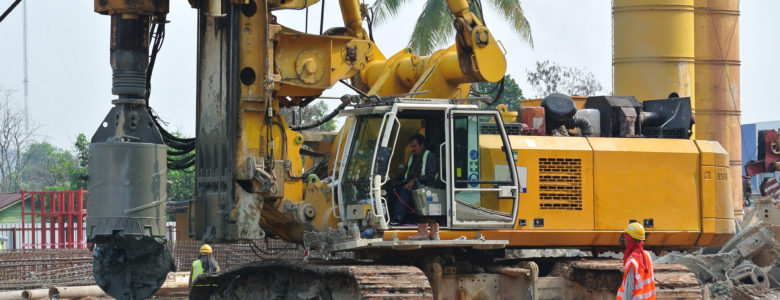Drilling a foundation is a dangerous business. Drillers are working around live electrical, gas and water lines, and a whole host of environmental hazards, like extreme temperatures, wildlife, and traffic, just to name a few.
Ensuring that you and your teams implement a drilling safety plan is critical. Not only do you want to keep you and your crews safe, but it’s better for business. Many companies are looking beyond price to safety program as part of their bid review process.
Not sure where to start with your drilling safety program? These five tips will help you to build one and to keep you and your crew on your next foundation drilling project.
Pre-Task Hazard Analysis
Planning is the most critical piece of any drilling safety program. Creating a pre-task hazard analysis brings awareness to the dangers of the particular job. Part of this process is to check gear, first aids kits, and emergency contacts.
After a pre-task hazard analysis is complete, it’s important to communicate the results clearly and regularly to team members. Using a DTA, or daily task analysis, to communicate the specifics of the work to be done each day, along with the hazards, is a great way to ensure that everyone on the site is prepared for the work and takes the appropriate precautions.
Safety rules should be regularly communicated to employees.
Safety Gear
Ensuring that everyone on site has access to and is outfitted with the proper safety gear is critical to a drilling safety plan. Everyone onsite should be wearing a brimless, plastic hard hat. These hard hats should be inspected regularly for cracks or damage and replaced.
Welders onsite will need both welding helmets and goggles. Employees working with cement, plastic or other possible-skin irritating substances should be wearing neoprene coated canvas gloves.
Both the onsite office and welding areas should have multi-purpose dry chemical extinguishers present.
Conducting safety gear reviews will help ensure employees have access to the gear that they need and that the gear is in good condition.
Site Conditions
Making sure your worksite is in good condition is also part of a strong drilling safety plan.
Walkways and work areas should be kept clear of loose materials. Elevated platforms higher than four feet should feature a handrail and toe board. If night work is going on, make sure that the area is properly lit.
Ensuring there are proper containers for combustibles, trash, and oil rags can help keep your employees and your site safe.
Fall Protection
One of the biggest concerns when it comes to drilling foundation work is falling hazards. It’s important to protect your team from falling hazards.
For drilled areas not currently active, cover the shafts with wooden mats or steel plates.
In areas where drilling is currently going on, either set steel casing at approximately 42 inches above grade or install a personal fall arrest system. Make sure that there is a physical perimeter with warning signs, and if possible, dedicated employees to watch the area.
Inspect What You Expect for Drilling Safety Plans
The key to any safety plan is to constant inspect what you expect. Reviewing safety policies with employees, inspecting safety gear, and doing site surveys are critical to ensuring that your worksite is a safe place for your employees.
Foundation drilling is serious business. It’s important to have the help of an expert to take on your project. Give us a call today to see how we can help.

